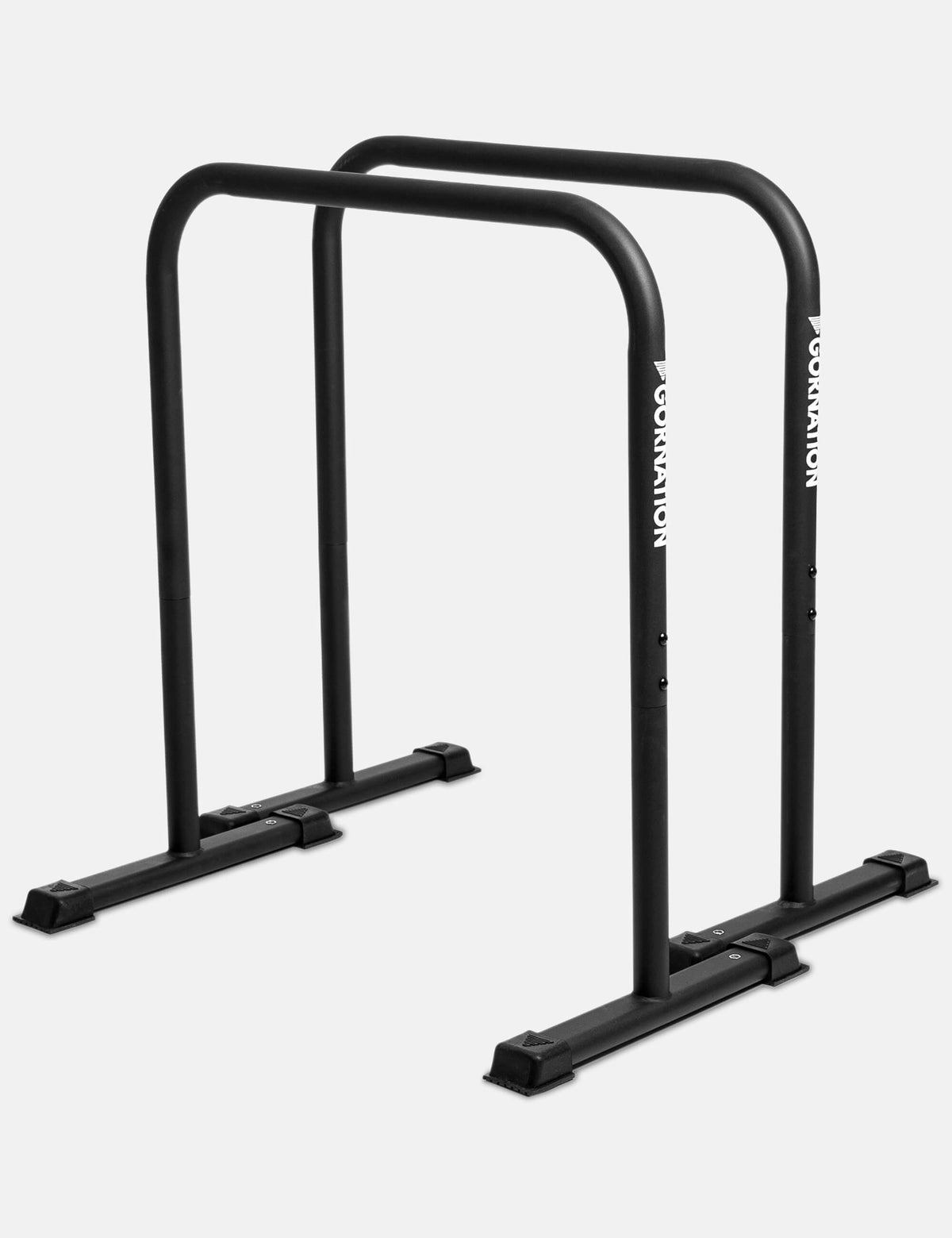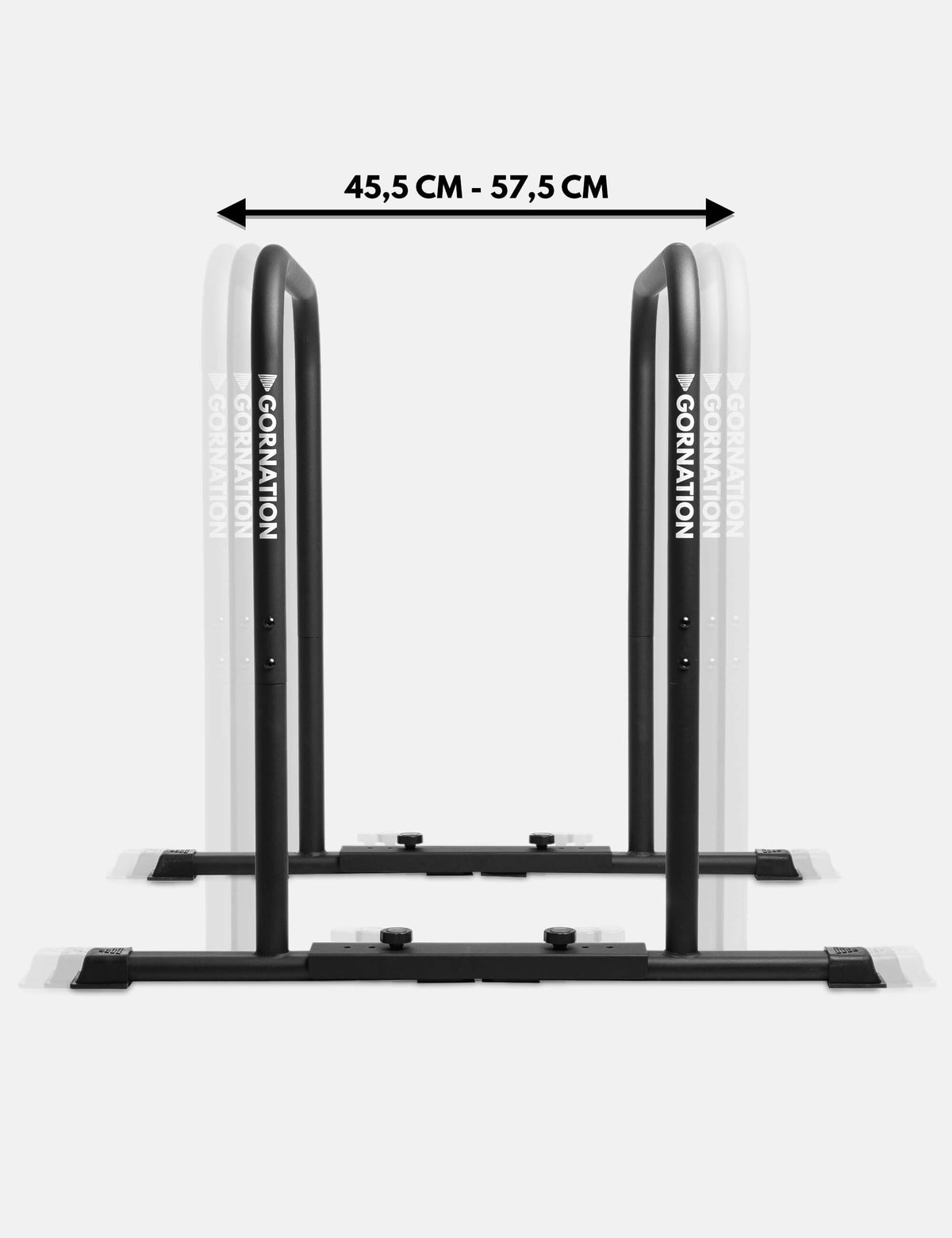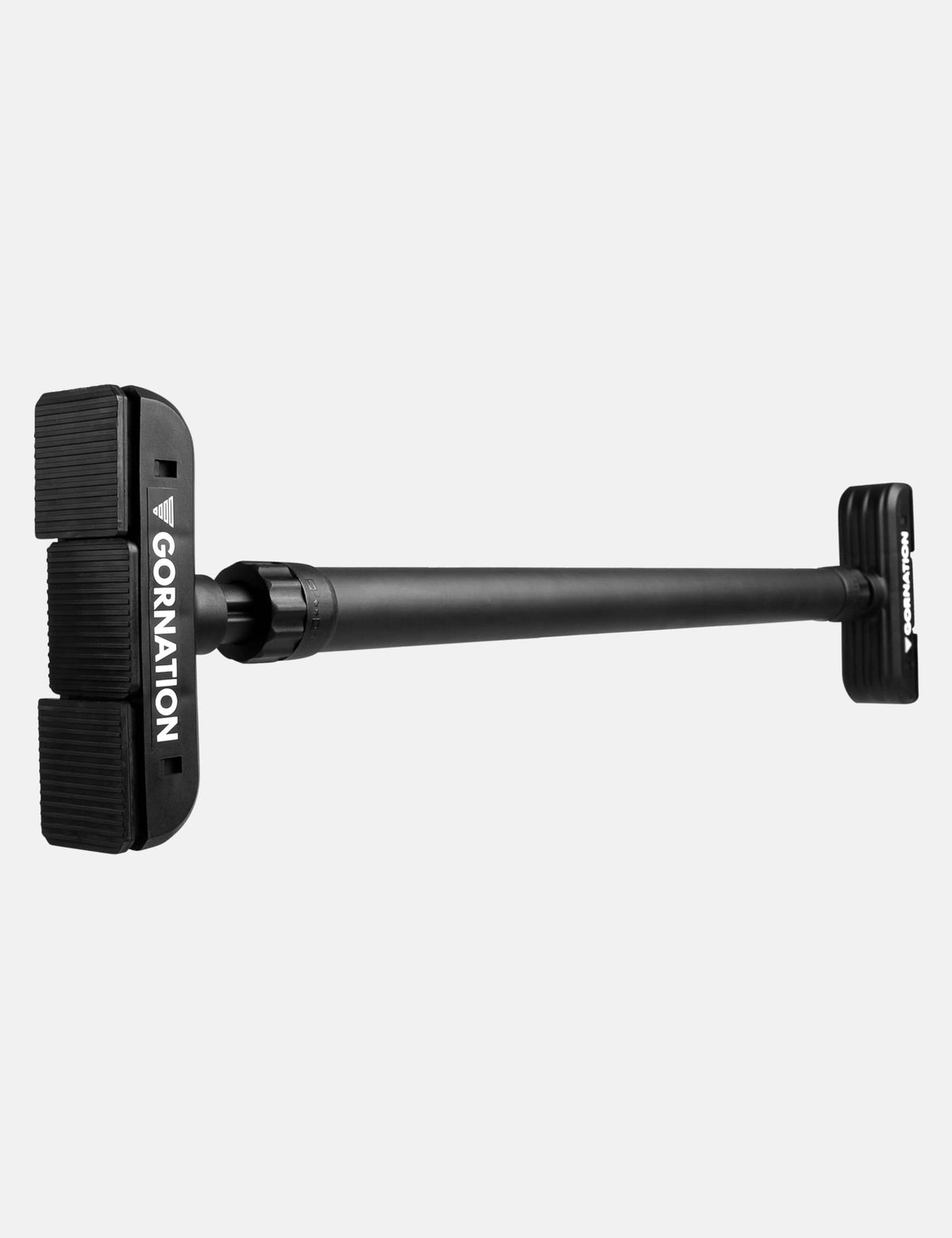How to do the exercise
The Straight Bar Handstand is an advanced calisthenics skill that challenges balance, strength, and control. Both hands are placed shoulder-width apart on one bar, demanding stability and strong shoulder engagement. Here’s how to perform it correctly:
1. Starting Position
Place both hands shoulder-width apart on a straight bar. Grip firmly, lock out your elbows, and engage your core. Look slightly down toward a fixed point on the ground to help stabilize your balance. Keep your shoulders pushed away from your ears for a strong, stable hold.
2. Balance Phase
Kick up into the handstand and stabilize your body over the bar. Use your fingers and palm pressure to make adjustments. Avoid arching your lower back; instead, keep a hollow body position with glutes and abs engaged. The gaze remains fixed on your point on the ground to enhance balance.
3. Controlled Hold
Maintain steady breathing and aim to hold the position for a few seconds at first. With practice, gradually extend the duration. Reset after each attempt, focusing on clean execution over long holds.
Tip: Beginners can use a wall behind them for light support when starting out. This helps to learn alignment and build confidence before moving to the freestanding version.
Recommended Equipment for Straight Bar Handstand
Benefits of the exercise
The Straight Bar Handstand is one of the most effective exercises to develop advanced control, strength, and balance:
-
Builds exceptional shoulder and core stability
-
Improves balance and proprioception through finger and palm engagement
-
Strengthens wrists and grip power on the bar
-
Teaches advanced body alignment and control useful for other handstand variations
This makes it an essential exercise for advanced athletes aiming to push their handstand skills and overall calisthenics performance to the next level.
Main muscles used
The Straight Bar Handstand primarily targets:
-
Shoulders (Deltoids)
-
Triceps
-
Forearms & Grip Muscles
-
Core (abs, obliques, and lower back for stabilization)
-
Glutes & Legs (to maintain straight alignment)
By training this advanced position, you develop total-body control and transferable strength for other static and dynamic skills.
If you're looking for other handstand exercises, check out our Youtube video:
Mistakes to avoid
Common mistakes when performing the Straight Bar Handstand include:
-
Arching the lower back: Keep a hollow body to avoid excessive pressure on the spine.
-
Not engaging shoulders: Shoulders must stay active and pushed away from the ears.
-
Looking forward or too high: Always fix your gaze slightly down on a point on the ground for better balance.
-
Uneven hand pressure: Balance comes from equal force distribution through palms and fingers.
-
Skipping wall progressions: Attempting freestanding too early reduces control and increases risk of falls.
Progress step by step, focus on form, and gradually increase your freestanding hold times for the best results.
Discover more Exercises
Looking for more ways to level up your training? Check out our full exercise overview or try these effective exercises that perfectly complement your training:
Please read our legal disclaimer before starting your workout.
 | 5.000+ Reviews
| 5.000+ Reviews
 Free EU Shipping above 100€*
Free EU Shipping above 100€*
 Worldwide Tracked Shipping
Worldwide Tracked Shipping













